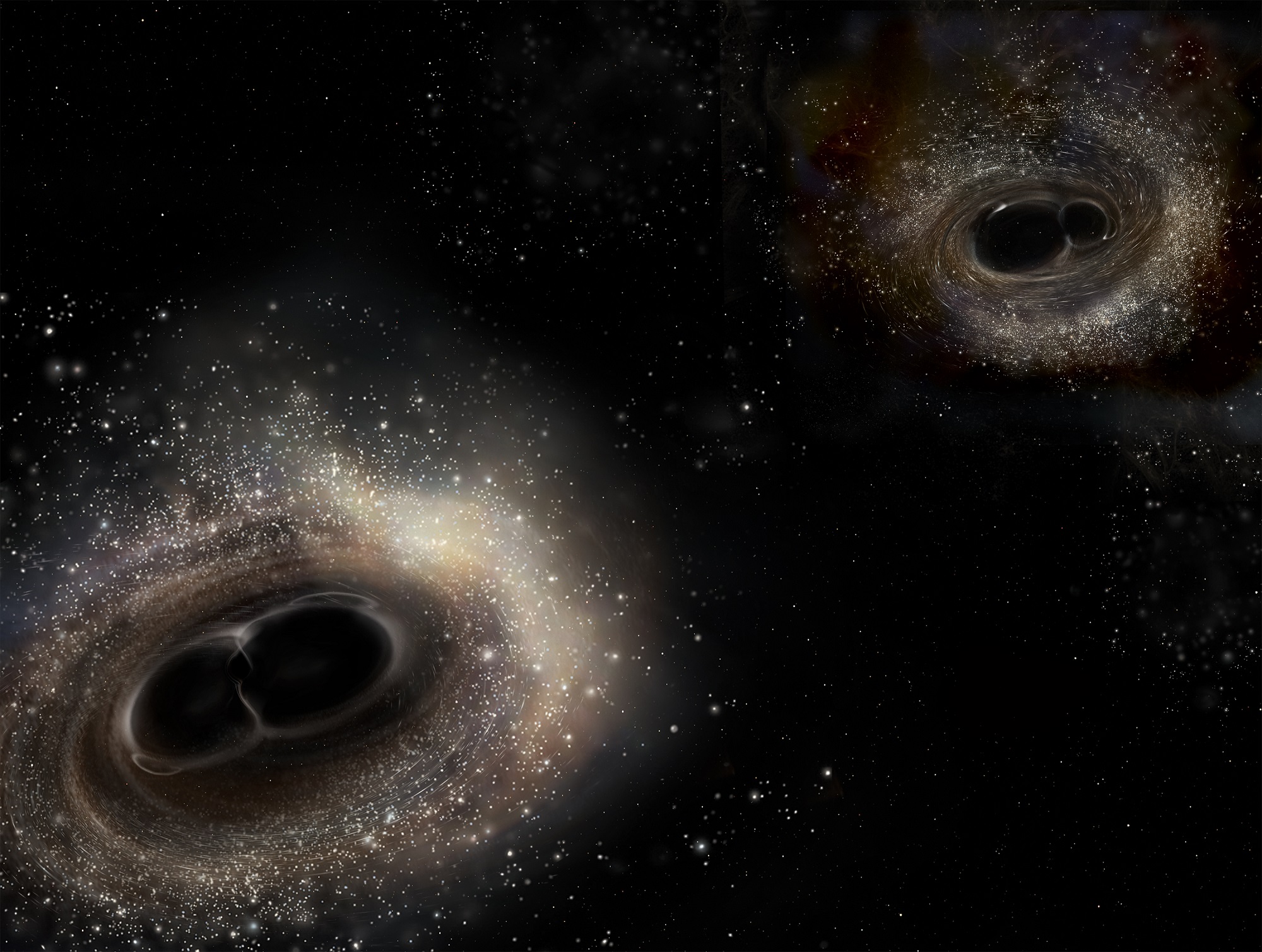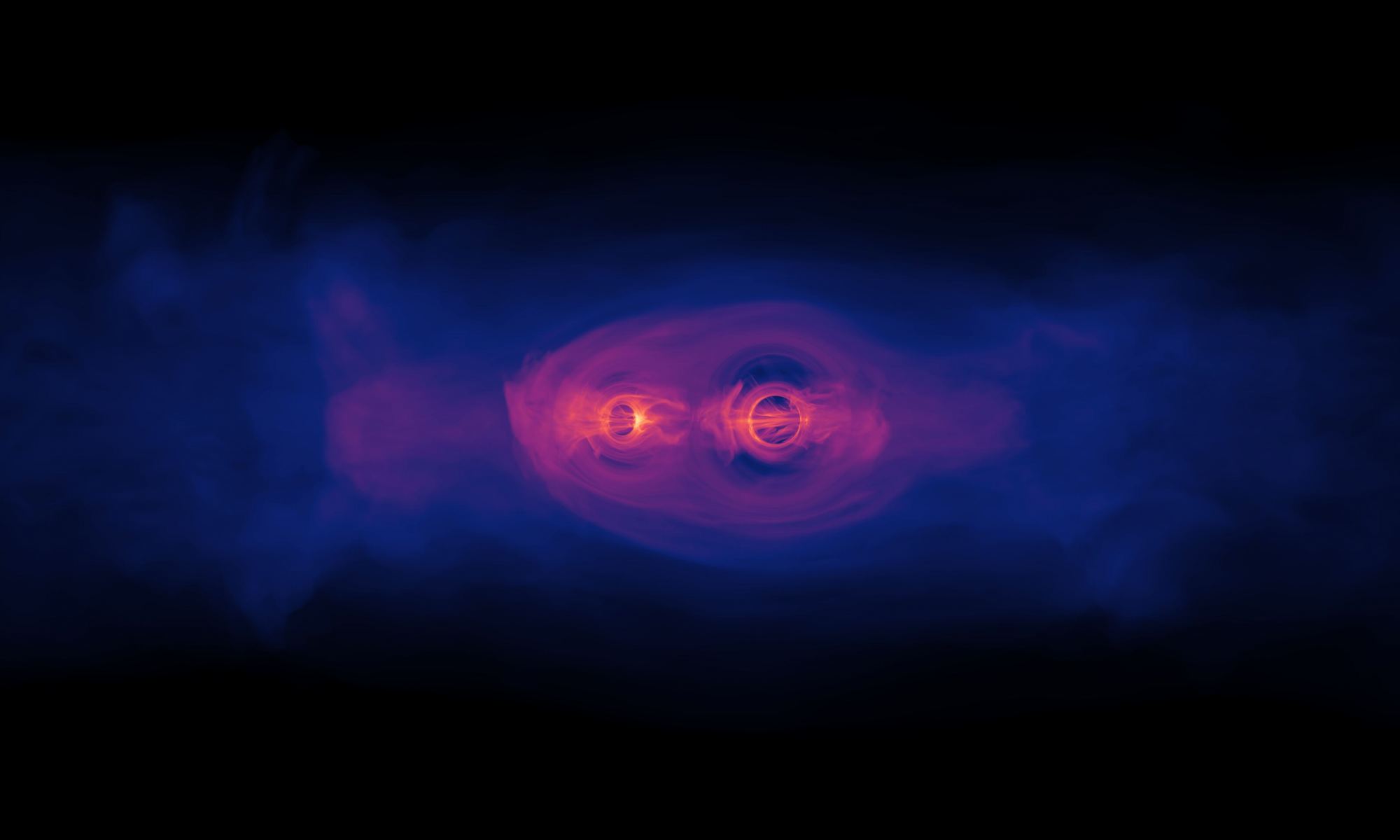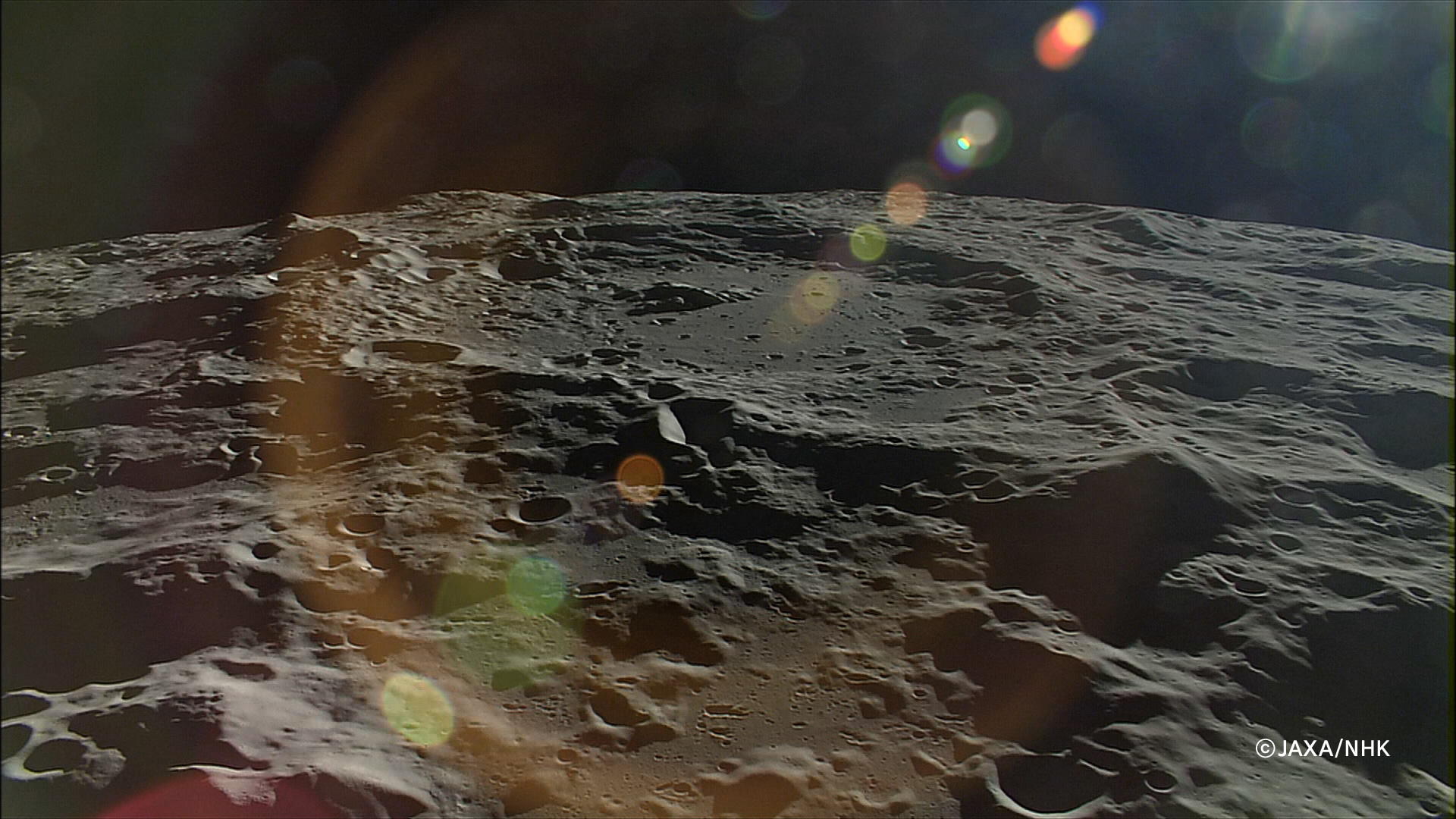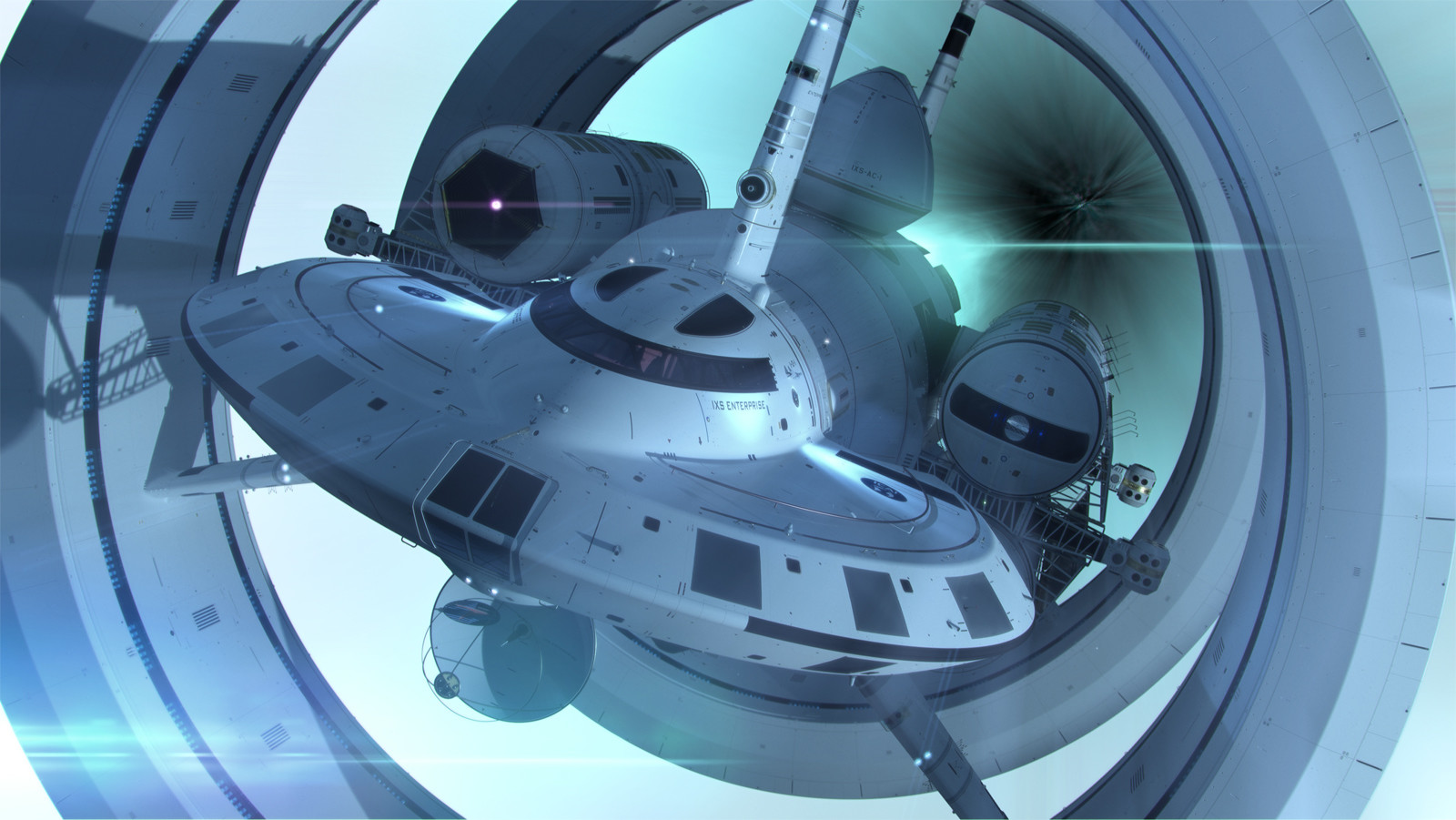Gravitational-wave astronomy is very different from that of electromagnetic light. While gravitational waves are faint and difficult to detect, they also pass through matter with little effect. In essence, the material universe is transparent to gravitational waves. This makes gravitational wave astronomy a powerful tool when studying the universe. But it’s still in the early stages, and there is much to learn about how gravitational waves behave.
Continue reading “It Could be Possible to see Gravitational Wave Lenses”What's the Connection Between Stellar-Mass Black Holes and Dark Matter?
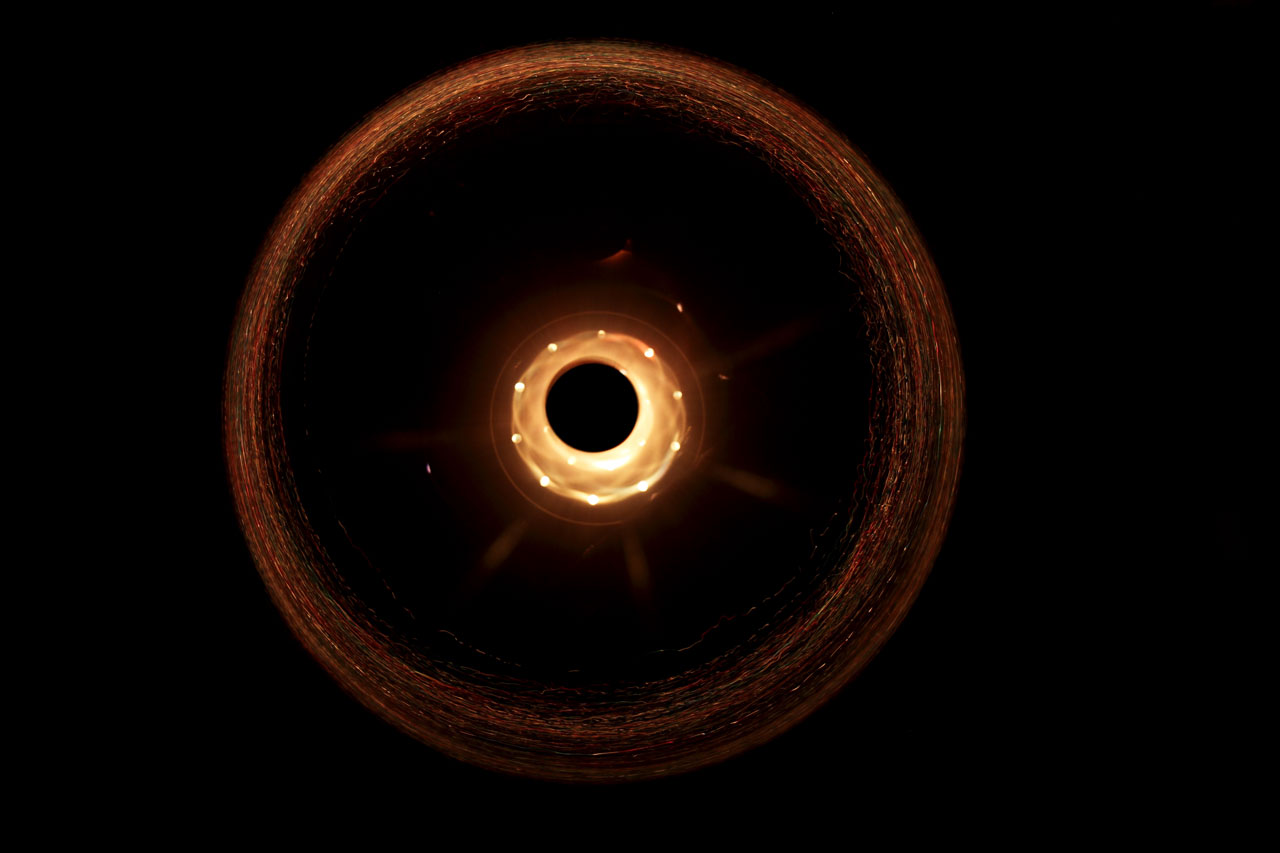
Imagine you are a neutron star. You’re happily floating in space, too old to fuse nuclei in your core anymore, but the quantum pressure of your neutrons and quarks easily keeps you from collapsing under your own weight. You look forward to a long stellar retirement of gradually cooling down. Then one day you are struck by a tiny black hole. This black hole only has the mass of an asteroid, but it causes you to become unstable. Gravity crushes you as the black hole consumes you from the inside out. Before you know it, you’ve become a black hole.
Continue reading “What's the Connection Between Stellar-Mass Black Holes and Dark Matter?”All The Gravitational Waves Detected So Far
Few events in the astronomy community were received with more fanfare than the first detection of gravitational waves, which took place on September 14th, 2015. Since then, different events have been recorded using the same techniques. Many include data from other observational platforms, as the events that normally create gravitational waves are of interest to almost everyone in the astronomical community. Black hole and neutron star mergers and the like provide a plethora of data to understand the physics that happen under such extreme conditions.
To distribute that data equitably, researchers at LIGO, one of the main observatories for gravitational waves, have released a data set that contains information about all 50 confirmed gravitational wave events that have taken place since observations began. What’s more, a team from the Cardiff University made a tool that makes it much easier to navigate the data.
Continue reading “All The Gravitational Waves Detected So Far”Merging Black Holes and Neutron Stars. All the Gravitational Wave Events Seen So Far in One Picture
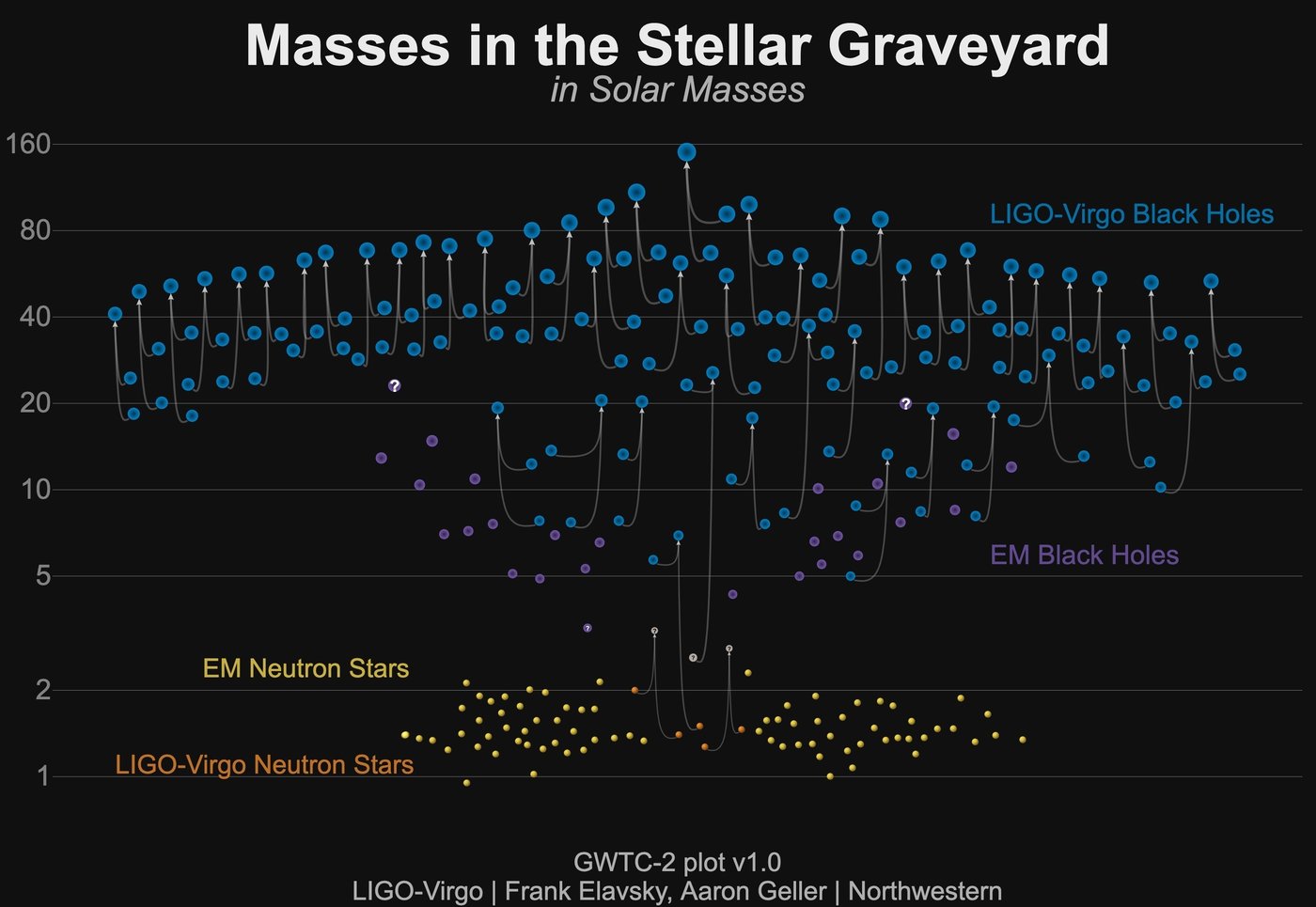
The Theory of Relativity predicted the existence of black holes and neutron stars. Einstein gets the credit for the theory because of his paper published in 1915, even though other scientists’ work helped it along. But regardless of the minds behind it, the theory predicted black holes, neutron stars, and the gravitational waves from their mergers.
It took about one hundred years, but scientists finally observed these mergers and their gravitational waves in 2015. Since then, the LIGO/Virgo collaboration has detected many of them. The collaboration has released a new catalogue of discoveries, along with a new infographic. The new infographic displays the black holes, neutron stars, mergers, and the other uncertain compact objects behind some of them.
Continue reading “Merging Black Holes and Neutron Stars. All the Gravitational Wave Events Seen So Far in One Picture”Why Can Black Hole Binaries Have Dramatically Different Masses? Multiple Generations of Mergers
On the 12th of April, 2019, the LIGO and Virgo gravitational wave observatories detected the merger of two black holes. Named GW190412, one of the black holes was eight solar masses, while the other was 30 solar masses. On the 14th of August that year, an even more extreme merger was observed, when a 2.5 solar mass object merged with a black hole nearly ten times more massive. These mergers raise fundamental questions about the way black hole mergers happen.
Continue reading “Why Can Black Hole Binaries Have Dramatically Different Masses? Multiple Generations of Mergers”The Moon is an Ideal Spot for a Gravitational Wave Observatory
In the coming years, multiple space agencies will be sending missions (including astronauts) to the Moon’s southern polar region to conduct vital research. In addition to scouting resources in the area (in preparation for the construction of a lunar base) these missions will also investigate the possibility of conducting various scientific investigations on the far side of the Moon.
However, two prominent scientists (Dr. Karan Jani and Prof. Abraham Loeb) recently published a paper where they argue that another kind of astronomy could be conducted on the far side of the Moon – Gravitational Wave astronomy! As part of NASA’s Project Artemis, they explain how a Gravitational-wave Lunar Observatory for Cosmology (GLOC) would be ideal for exploring GW in the richest and most challenging frequencies.
Continue reading “The Moon is an Ideal Spot for a Gravitational Wave Observatory”It might just be possible to see a light flash too when black holes merge
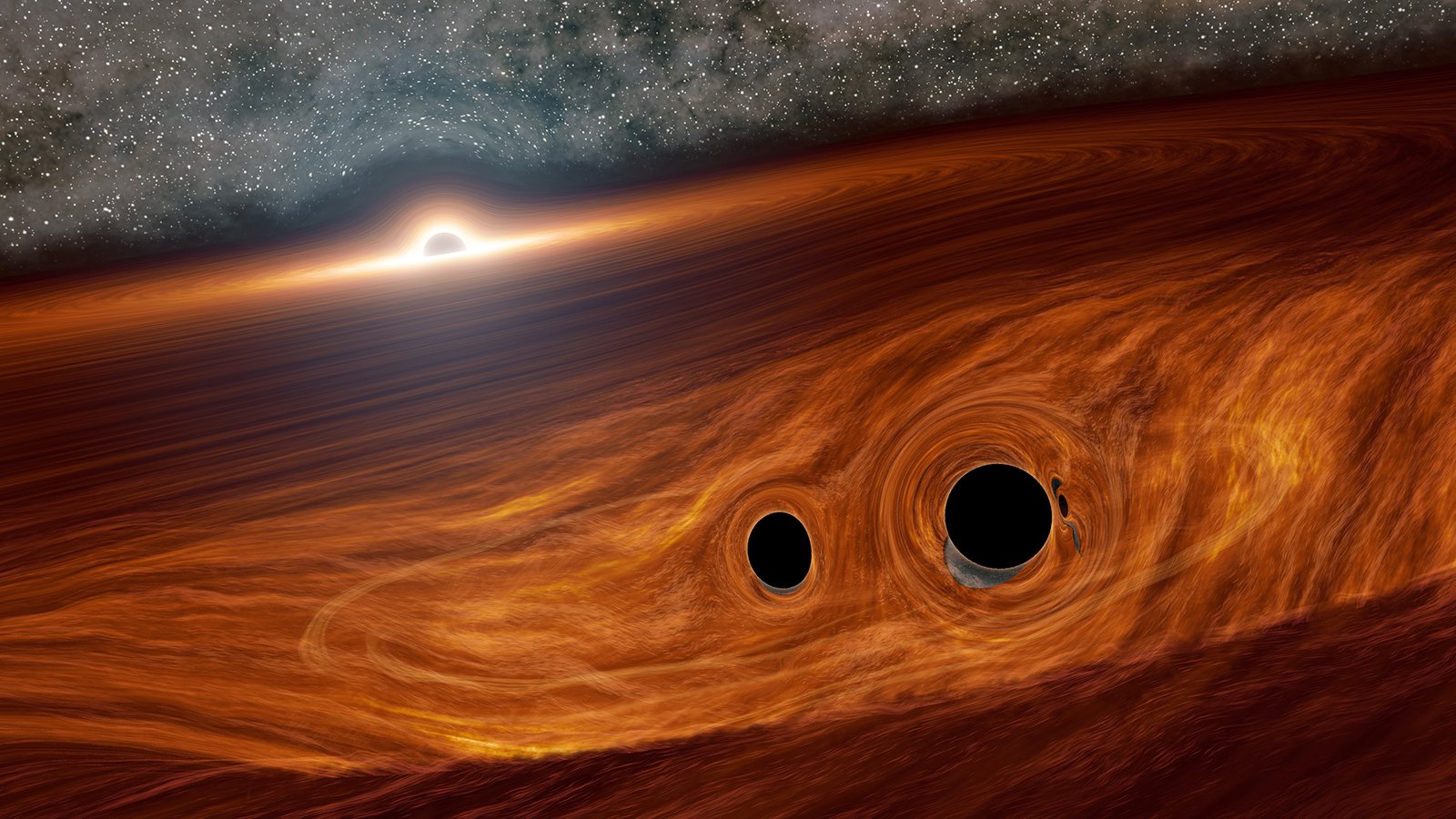
Black hole merger events are some of the most energetic, fearsomely energetic events in all the cosmos. When black holes merge, they’re entirely invisible, the only evidence of the cataclysm some faint whisper of gravitational waves. Until now.
Continue reading “It might just be possible to see a light flash too when black holes merge”Astronomers Detected a Black Hole Merger With Very Different Mass Objects
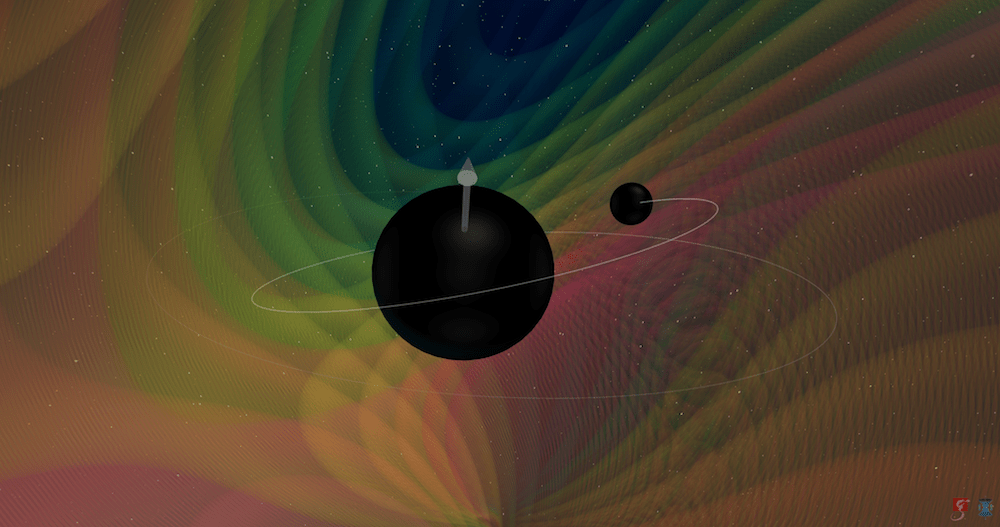
In another first, scientists at the LIGO and Virgo gravitational wave detectors announced a signal unlike anything they’ve ever seen before. While many black hole mergers have been detected thanks to LIGO and Virgo’s international network for detectors, this particular signal (GW190412) was the first where the two black holes had distinctly different masses.
Continue reading “Astronomers Detected a Black Hole Merger With Very Different Mass Objects”Just How Feasible is a Warp Drive?
It’s hard living in a relativistic Universe, where even the nearest stars are so far away and the speed of light is absolute. It is little wonder then why science fiction franchises routinely employ FTL (Faster-than-Light) as a plot device. Push a button, press a pedal, and that fancy drive system – whose workings no one can explain – will send us to another location in space-time.
However, in recent years, the scientific community has become understandably excited and skeptical about claims that a particular concept – the Alcubierre Warp Drive – might actually be feasible. This was the subject of a presentation made at this year’s American Institute of Aeronautics and Astronautics Propulsion and Energy Forum, which took place from August 19th to 22nd in Indianapolis.
Continue reading “Just How Feasible is a Warp Drive?”Gravitational Wave Detectors Might be Able to Detect Dark Matter Particles Colliding With Their Mirrors
The field of astronomy has been revolutionized thanks to the first-ever detection of gravitational waves (GWs). Since the initial detection was made in February of 2016 by scientists at the Laser Interferometer Gravitational-wave Observatory (LIGO), multiple events have been detected. These have provided insight into a phenomenon that was predicted over a century ago by Albert Einstein.
As it turns out, the infrastructure that is used to detect GWs could also help crack another astronomical mystery: Dark Matter! According to a new study by a team of Japanese researchers, laser interferometers could be used to look for Weakly-Interacting Massive Particles (WIMPs), a major candidate particle in the hunt for Dark Matter.
Continue reading “Gravitational Wave Detectors Might be Able to Detect Dark Matter Particles Colliding With Their Mirrors”
